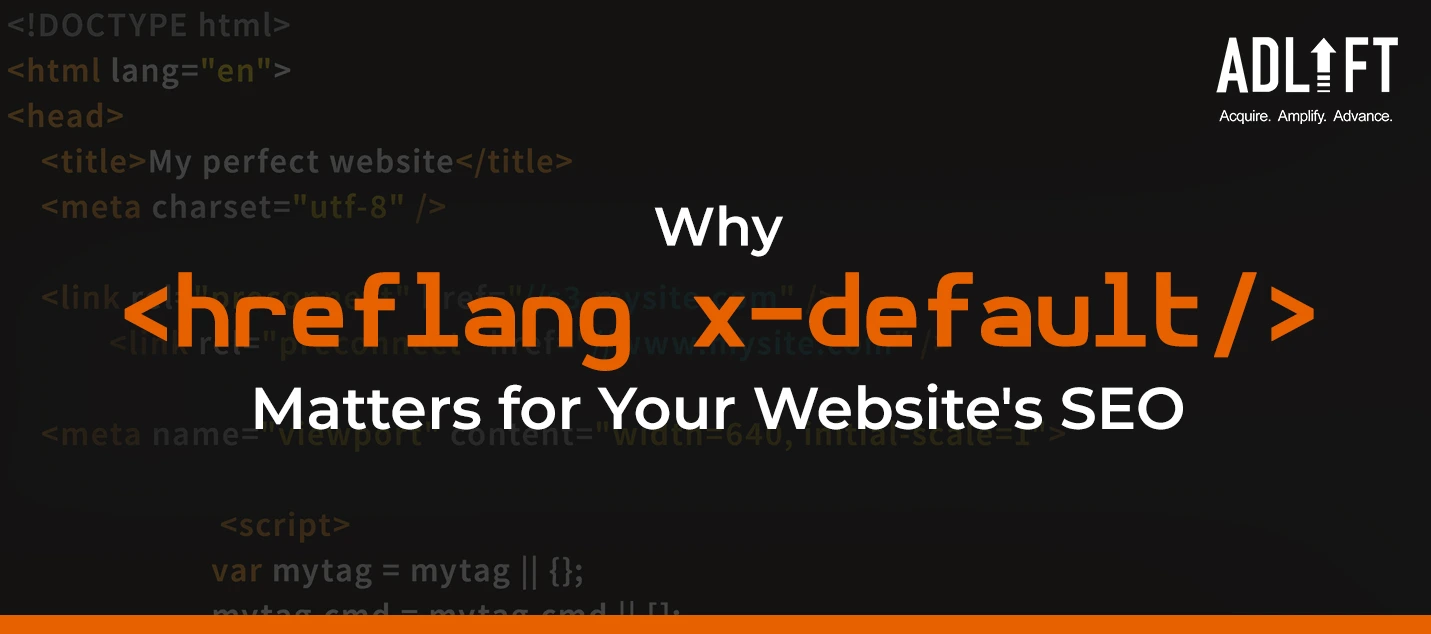Why hreflang x-default Matters for Your Website’s SEO

Are you planning to launch a website that caters to a global audience with different languages? Well, hold your horses because there’s something you need to know. When it comes to building a multilingual website, you have to consider how search engines perceive each country and language on your site. To help search engines do that, Google makes use of something called hreflang tags.
If you want to chart the seas of global SEO, then the hreflang attribute is necessary for your website. In this blog post, we will cover the basics of this attribute and why it’s important for you. Let’s dive into the details and see how these tags can help your website achieve global success!
What is hreflang?
A hreflang attribute is a valuable tool in web development that allows you to define the language and location targeting of a particular webpage. With multiple versions of a single page in different languages, the hreflang tag can be utilized to notify search engines such as Google about these variants. Doing so enables these search engines to present the appropriate version of the page to their users, resulting in a more seamless and relevant browsing experience.
This attribute is mainly focused on improving the overall user experience. To help you better understand, here is a real-life example of the hreflang tag at work.
Example of X-Default hreflang Tag<link
<link href=”https://www.adlift.com/blog/why-hreflang-x-default-matters-for-your-websites-seo/” rel=
“alternate”hreflang=”x-default” />
For instance, if we search for ‘AdLift‘ in India, this is the first result :
<link href=”https://www.adlift.com/in/blog/why-hreflang-x-default-matters-for-your-websites-seo/” rel=
“alternate” hreflang=”en-in” />
If we do the same in the Adlift US, this is the first result:
<link href=”https://www.adlift.com/blog/why-hreflang-x-default-matters-for-your-websites-seo/” rel=
“alternate” hreflang=”en-us” />
This is possible because of the hreflang tag
One important thing to note is that the hreflang tag is not a directive but a signal for Google. As per Google’s Knowledge base, even if you don’t use the hreflang tag, Google search might find alternate language versions of that page. However, you shouldn’t leave it to chance; if Google recommends something, you should implement it.
How Can hreflang x-default Help You?
The “hreflang x-default” tag is a way to tell search engines that a webpage is intended for a general audience. This tag serves as a fallback option for users who don’t match any language or location targeting options specified on the page.
For example, let’s say you have a website that offers English, French, and Spanish content. If a user with a language preference of German visits your website, the “x-default” tag will be triggered and display the default version of your page, which could be English, for instance. By utilizing this tag, you can ensure that users who don’t match any of the specific targeting options can still access your content in a language they understand.
Now that we understand what it stands for let us look at some benefits of the ‘hreflang x-default’ tag for you:
- Help Reach a Broad Audience: Firstly, it helps to ensure that your website’s content is accessible to a broader audience by providing a fallback option for users who don’t match any of the specific language or location targeting options on your page. This can increase your website’s visibility and reach, potentially increasing traffic and engagement.
- Allows URL Discovery: Although it may not be a widely discussed topic, it’s important to note that the URLs you include in your hreflang annotations, including the “x-default” tag, can be used for URL discovery purposes. This feature can be handy for larger websites with complex structures, where ensuring that every localized URL is well-linked can be challenging.
URL discovery allows search engines to locate and index localized versions of your website’s content more efficiently by using the URLs specified in your hreflang tags. Doing so can help improve the accuracy of search results and ensure that your content reaches the appropriate audience.
So, while it may seem like a minor detail, taking the time to specify your URLs in hreflang – x default annotations can significantly impact your website’s visibility and accessibility in different regions and languages. We recommend ensuring you make the most of this helpful tag and acing your site’s SEO.
Categories
Recent Posts
- 2024 Google Search Trends in the United States: What Captured Our Attention This Year? December 24, 2024
- Understanding Google’s December 2024 Core Update: What to Expect December 17, 2024
- Optimizing For Google AI Overviews: What Marketers Need To Know November 19, 2024
- Google’s Latest Shake-up: November 2024 Core Update November 13, 2024
- SEO Ranking Explained: Proven Techniques to Enhance Your Website’s Traffic October 22, 2024
- The Importance of Mobile SEO Optimization: A Guide to Staying Competitive October 16, 2024
- What is Evergreen Content? Build Traffic That Never Fades October 15, 2024
- The Role of Technical SEO Elements in Enhancing Site Performance and Rankings October 10, 2024
- Customer Acquisition 101: Building a Loyal Client Base October 10, 2024
- How User Experience Directly Impacts SEO Rankings: Key Factors to Consider October 8, 2024
Get
in Touch
Contact AdLift for a 360-degree marketing plan



